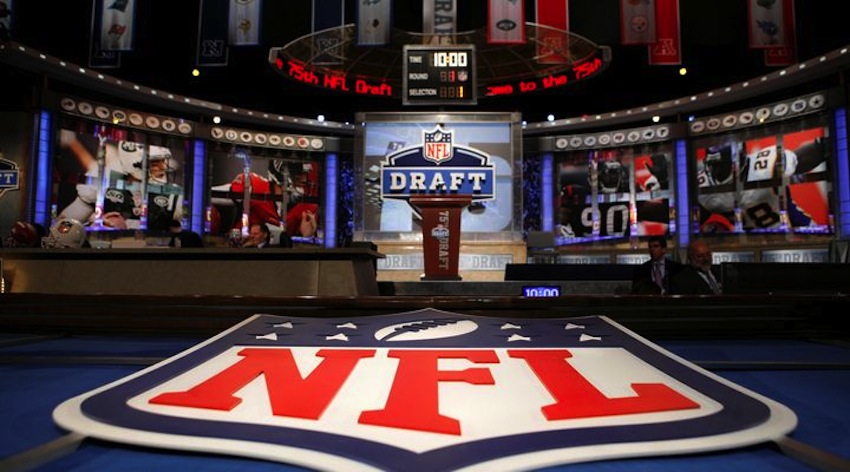NFL, Saban continue crusade to slow number of players going pro early
TUSCALOOSA, Ala. — Efforts by the National Football League and University of Alabama coach Nick Saban to curtail the stream of players leaving school early may be working, although there’s still nearly a month for underclassmen to declare themselves eligible for the next draft.
NFL Executive Vice President of Football Operations Troy Vincent, who Saban brought in during training camp to speak to the Crimson Tide about this very subject, tweeted on Thursday that so far the number of college underclassmen who have requested an evaluation from the NFL Draft Advisory Board is down 42 percent.
A record 98 underclassmen were granted eligibility for the 2014 NFL Draft, 45 of whom went undrafted. Of them, most didn’t sign free-agent deals.
“I think everybody realizes this is not good for anybody,” said Saban, who used the word “inefficient” to describe the board’s evaluation process that was making too many “mistakes.”
“At some point in time if we don’t get off of this cycle of a whole bunch of guys going out for the draft that shouldn’t go out for the draft, and this thing of (agents) selling them on that they can get to their second contract soon. They don’t tell them there is less than a 33 per cent chance if you are a sixth-round draft choice you are going to get a second contract ever. And if you get drafted in those rounds you are very cutable based on the investment that a team has to make in you.
“So why not go back to school and get a degree and try to become a higher pick where you have a better chance and a better investment and a better business decision and a better future?”
Specifically, last year a total of 214 college players put in for grades from the NFL’s advisory committee.
LSU had the most with 11, and ended up with one player selected in the first round, three in the second, and nine overall. Alabama, Miami and Florida State all had 10 players seek input from the board.
While Crimson Tide safety Ha Ha Clinton-Dix was selected in the first round, 21st overall, to Green Bay, and tackle Cyrus Kouandjio was a second-round selection by Buffalo. Safety Vinnie Sunseri lasted until the fifth round, defensive lineman Jeoffrey Pagan was a sixth-round selection and linebacker Adrian Hubbard went undrafted.
Sunseri played mostly on special teams for the Saints, but sustained a season-ending arm injury. Pagan has made nine tackles for the Texans and Hubbard is on the Packers’ practice squad.
According to NFL.com, from 2012-14, the advisory board was accurate on 73.7 percent of its first-round grades and 85.4 percent of its second-round grades, but just 52.9 percent on third-round grades.
Consequently, the NFL made two important changes last summer:
1) College programs would be limited to requesting feedback for just five underclassmen, and:
2) The grading process.
There used to be five categories:
- As high as the first round;
- As high as the second round;
- As high as the third round;
- No potential to go in the first three rounds;
- No potential to be drafted.
The league cut that down to just three categories: first round, second round, and neither. “Neither” essentially means the league encourages the player to stay in school.
Saban said during his press conference on Saturday that he’ll still make the necessary calls to NFL teams to find out what he can for any Crimson Tide player wanting to know his draft status.
Although Alabama doesn’t release which players make inquiries from the draft board, safety Landon Collins, wide receiver Amari Cooper and running back T.J. Yeldon are likely candidates this year. No one else figures to be rated as a potential first- or second-round pick, but those to keep an eye on include defensive linemen Jarran Reed and D.J. Pettway, and linebackers Denzel Devall and Reggie Ragland.
The deadline to declare for the 2015 NFL Draft is Jan. 15.
“It’s not really about where you get drafted, it’s about what kind of career you’re going to have and how long you’re going to be able to play,” Saban said. “Football is one of the only games where there is no other place to develop players. There’s no Triple-A like in baseball. There’s no (D) League or whatever they call it in basketball where the NBA guys go, none of that. So once you make that decision, it’s kind of all or nothing.
“I try to encourage our guys who aren’t going to be top draft picks to stay in school. Last year we didn’t have success in convincing everyone about that and I don’t know if we’ll be able to do it this year or not.”

